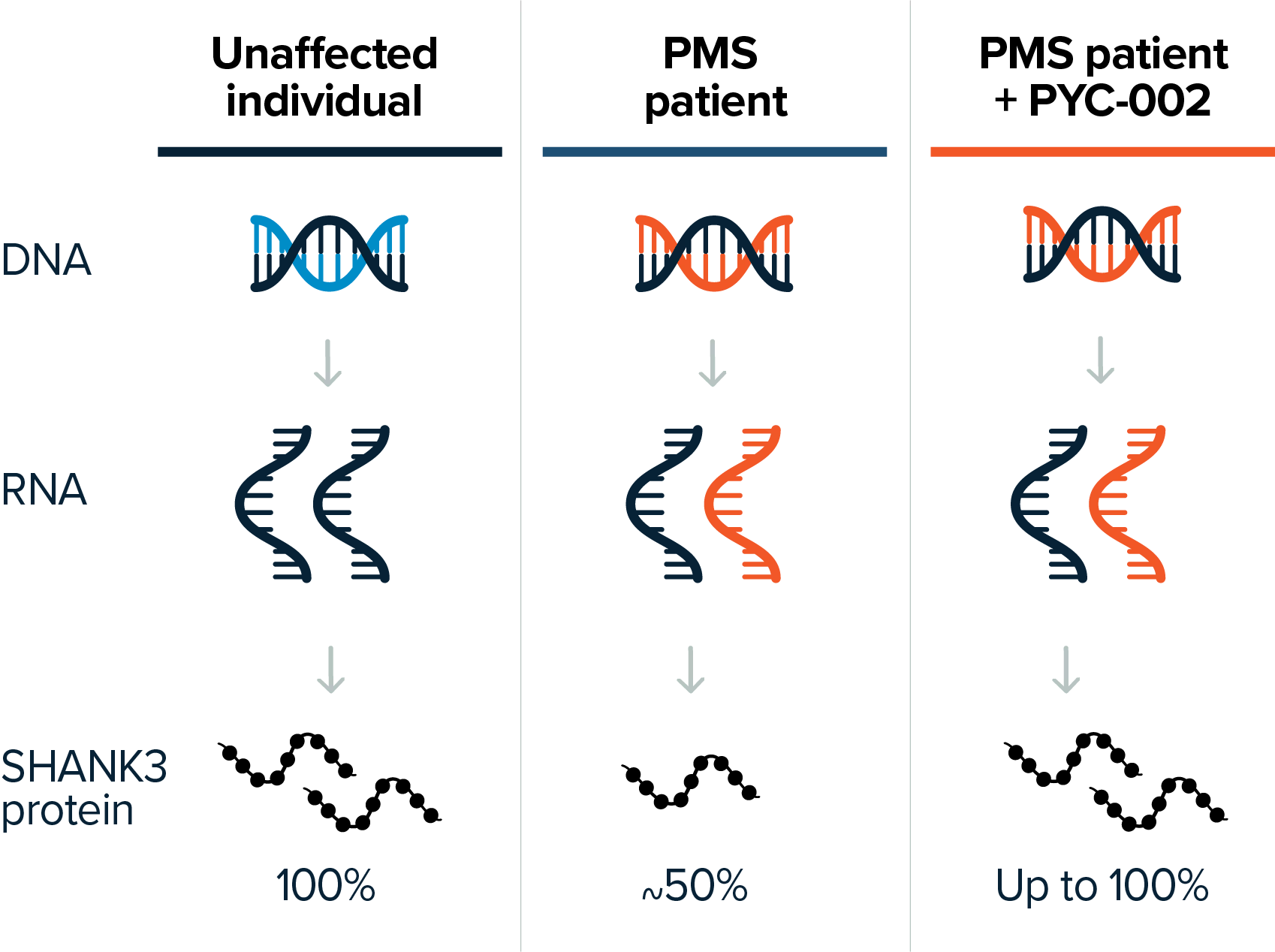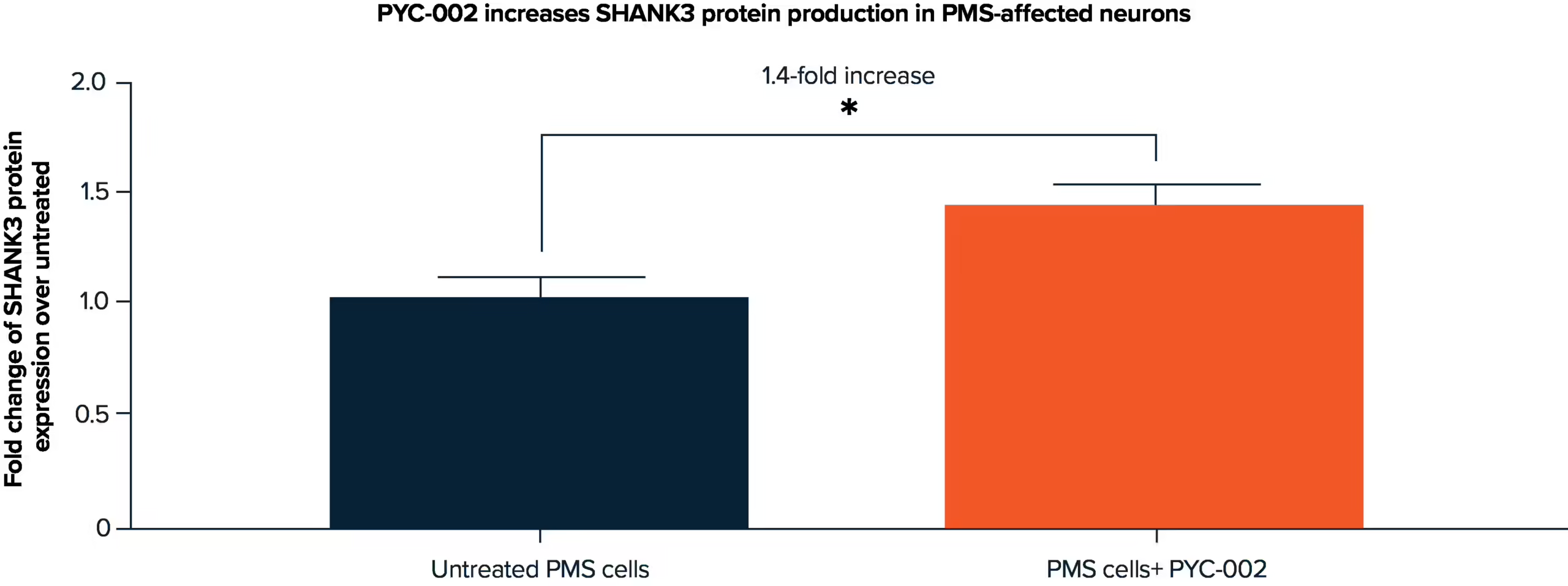PMS is a severe neurodevelopmental disease caused by insufficient expression of the SHANK3 gene in neurons (nerve cells) in the brain.
Patients can experience a wide range of medical, intellectual and behavioural challenges, including life-long intellectual and physical disability. There are no available treatments for patients with PMS.
PYC has developed PYC-002, the first potentially disease-modifying therapeutic for PMS that addresses the root cause of the condition. PYC-002 is currently in pre-clinical studies.









